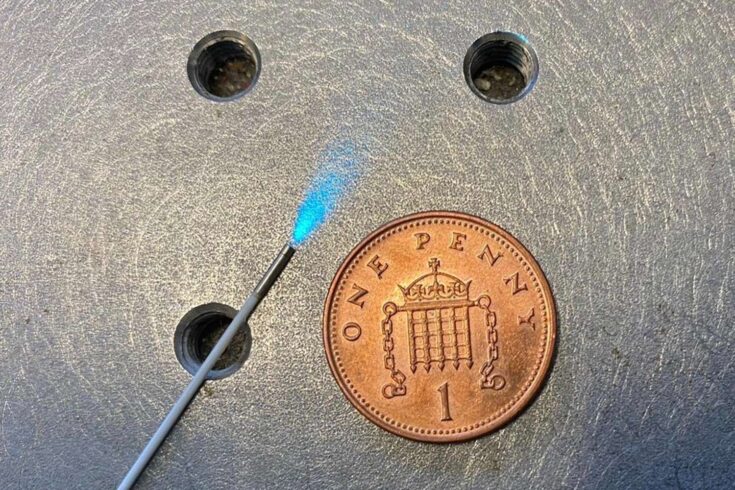Researchers at Imperial College London have developed an ultra-tiny endo-microscope that could help improve breast cancer treatment and cut NHS waiting lists.
The endo-microscope, a microscope designed to be inserted into the body to provide views of tissues and organs, can be steered through extremely small, tight spaces in the body during surgery, producing images with unprecedented speed.
When exploring spaces such as breast ducts, the instrument can pinpoint features smaller than a single cell.
It will aid high-precision breast-conserving surgery by enabling surgeons to identify, extremely accurately and much more quickly than currently possible, suspicious tissue around tumours as well as cancerous cells just a hundredth of a millimetre across.
Breast-conserving surgery is preferred over mastectomy (complete breast removal) because it involves localised tumour removal, less patient trauma, good outcomes from a cosmetic perspective and shorter hospital stays (saving NHS resources). But this option often involves the need for further operations.
The endo-microscope is also designed to be used in the lungs, urinary tract, digestive system and brain, for instance.
It is being developed by Dr Khushi Vyas and colleagues at Imperial College London, supported by the Engineering and Physical Sciences Research Council (EPSRC), part of UK Research and Innovation.
Higher patient throughput
The instrument will reduce the need for follow-up operations to remove cancerous cells that previously evaded detection, benefiting the patient and helping to reduce pressure on NHS resources.
Up to 20% of breast cancer patients treated through breast-conserving surgery currently need such operations.
Patients will also benefit from shorter recovery times as a result of the unnecessary removal of tissue being minimised.
A key advantage of the new instrument is its ability to produce high-resolution real-time images of tissue micro-architecture an order of magnitude quicker than existing commercially available systems.
This will reduce the duration of operations and potentially further increase patient throughput.
The researchers have used their system for preliminary studies on human cancer tissue and are now testing its use by surgeons and pathologists on laboratory samples of cancerous tissue.
Extremely easy to use
Compact, portable and easy to use, the endo-microscope comprises a tiny lens assembly fitted to the end of a flexible polymer fibre-bundle the width of 25 to 30 human hairs.
The system is designed to be set up next to the patient in the operating theatre.
The surgeon will then carefully insert the fibre into the patient by hand, holding it like a pen. Alternatively, the endo-microscope can be fitted into a robotic scanner to precisely scan the entire breast cavity for suspicious tissue.
This new instrument can be navigated around very easily, with instant large-area mosaic image generation of whatever the fibre-tip comes into contact with, similar to the panorama feature on smartphones.
The high-resolution images are displayed in real-time on a high-definition monitor that the surgeon consults as they work.
Big boost to breast cancer treatment
EPSRC Director for Cross-Council Programmes, Dr Kedar Pandya, said:
By reducing the time it takes to identify cancerous cells and improve the accuracy of imaging the endo-microscope developed by Dr Vyas and his team could benefit patients and the NHS by reducing waiting lists.
This illustrates the important role that cutting-edge research and innovation will play in helping us to detect and treat the most common cancer in the UK.
A huge leap forward
Dr Khushi Vyas of Imperial College London says:
A key focus of this EPSRC-funded work has been the development of hardware and software enabling the new system to generate 120 frames per second, a huge leap forward in terms of image acquisition during surgery.
Our aim is to proceed to clinical trials with a view to the system becoming available for deployment in around 5 years.
Top image: Credit: Dr Khushi Vyas, Imperial College London

